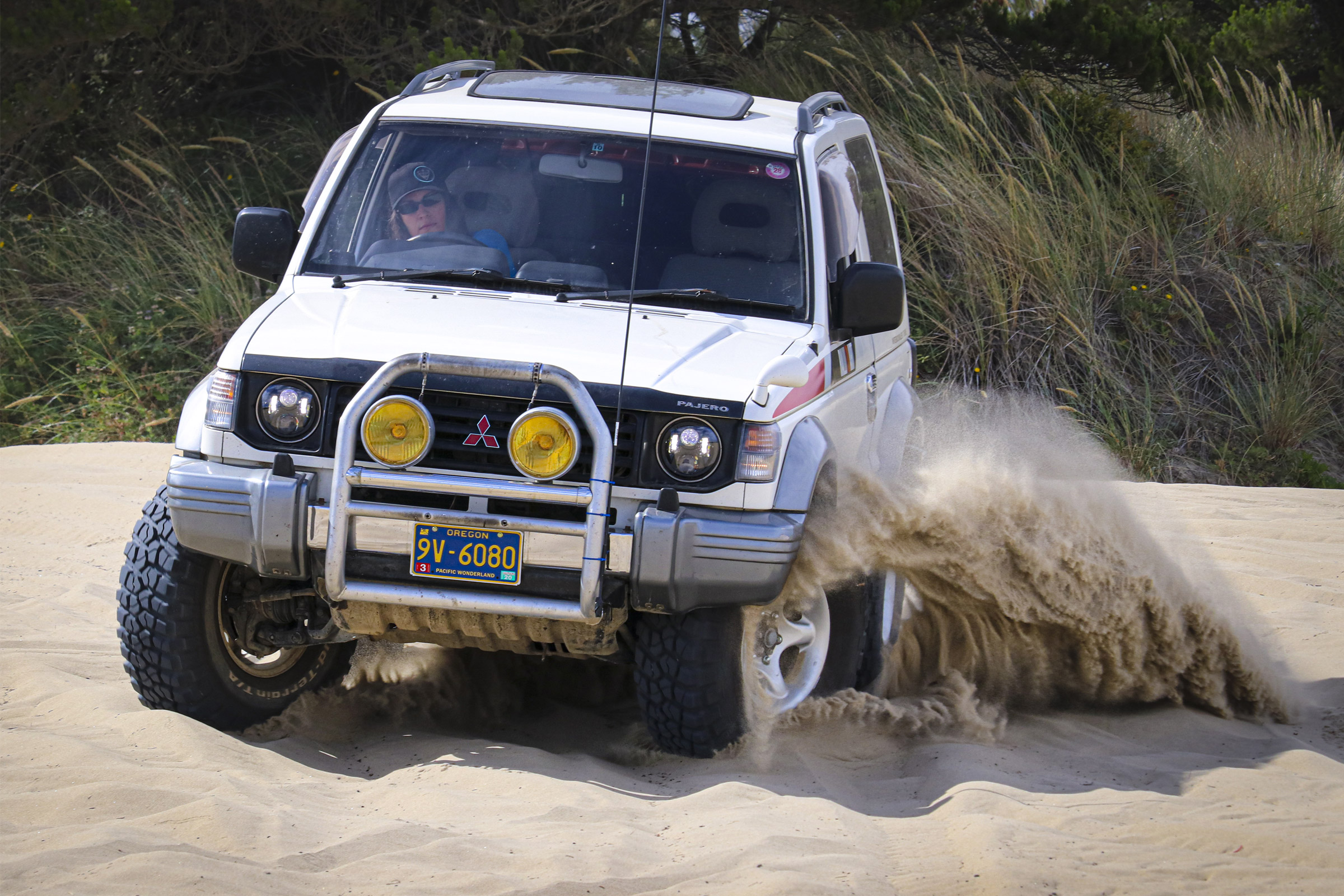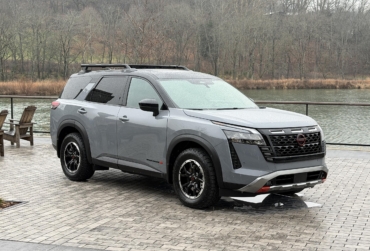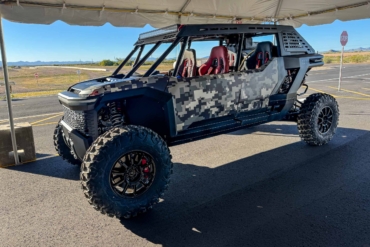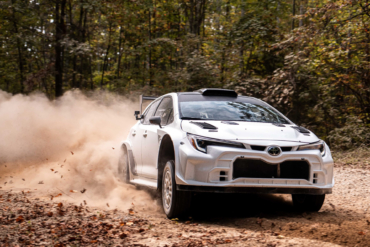It doesn’t matter if you run a stock Subaru or a customized 4×4 with a bounty of bells and whistles. Knowing how to recover a stuck vehicle is important — especially without a winch.
We all get stuck at some point or another. And if you’re in a vehicle, it’s important to be able to get yourself out of a jam.
Creating a recovery kit and knowing how to use it is tantamount to safety in backroad situations. I break down the basics on building out a kit as well as a wealth of safety info to help you (or someone else) get out of a jam.
Read for more on how to safely recover your vehicle.
Exercise EXTREME caution when recovering a vehicle. People die every year attempting to recover vehicles. And beyond this, severe bodily injury OR severe vehicle damage is possible. If you feel like you’re out of your realm of experience, consult and hire a professional. It’s worth the wait.
Basic Vehicle Recovery Kit Contents
Owning the bare essentials to get vehicles out of stuck situations can help unbearable situations become safe and secure.
A basic vehicle recovery kit can help drivers explore confidently, no matter if traveling on the tarmac, driving on dirt, or slogging through snow. Basic recovery kits work for every type of vehicle: 4WD, AWD, and 2WD (both front- and rear-wheel drives).
A sturdy shovel, a kinetic recovery rope, a good set of gloves, metal or soft shackles, and a heavy-duty set of traction boards are all you need to create a basic kit. Purchase products from premium brands, and don’t skimp on safety. You’ll thank us later.

The Right Know-How
In addition to what you buy, knowing how to use each item is equally as important.
Before you recover yourself or another vehicle, the first thing to understand is what legitimate recovery points are on a car.
Do you know the difference between a tie-down point and a proper recovery point? Check your owner’s manual to find carefully placed recovery points and never use tie-down points for recovery.
One type of recovery point could be found behind a rear bumper — plain, simple, and out in the open. Others can be hidden behind a front bumper, under a small cover.
If this is the case, simply remove the cover and screw in the threaded eyelet (otherwise known as an OE-supplied recovery loop). The eyelet is normally found in a small packet next to the factory spare tire or scissors jack in the trunk or under a seat.
Note: Under no circumstances should a tie-down point or the ball on a hitch be used to recover a vehicle. This could potentially cause severe harm to yourself, those around you, or vehicles.

Types of Shackles
Every basic recovery kit should have at least two shackles. Shackles are made from metal or flexible, braided synthetic rope. Both shackle types are used to connect recovery straps (or other recovery items) to vehicles.
Whereas metal shackles last longer and aren’t susceptible to abrasion, they are also heavier in weight. Soft shackles are lighter, but they can wear faster.
Metal shackles have a few different names: D-shackles, screw-pins, or bow shackles. Cheaper metal shackles are cast metal whereas premium ones are forged — a process that forces air bubbles out of the material, making them stronger and less prone to defects.
Soft shackles are made from synthetic braided material with a knot on one end and a loop on the other. (An example of this is UHMWPE, which is an ultrahigh molecular weight polyethylene.) To use it, simply pull the knot out of the loop, and then secure the shackle around the recovery point. Then secure it by feeding the knot through the loop again, creating a closed circle.
When using metal shackles with recovery straps, remove the pin. Next, loop the curved shackle portion around a proper recovery point. Then, hand-tighten the pin once secure.
Note: Do not tighten metal shackles too much. Hand-tighten, and then do a quarter turn back. This ensures that the pin will unscrew after a vehicle recovery has taken place. If it was screwed in too tightly, a hefty set of pliers may be needed to release the pin.

Recovery Straps
The only recovery strap you should have in a basic non-winch recovery kit is a kinetic strap, otherwise known as a snatch strap. Incorporating stretch into their synthetic material, kinetic straps are designed to stretch and “snap” a stuck vehicle out of their mishap.
These types of straps use kinetic energy to transfer energy smoothly through the strap from the vehicle doing the pulling to the vehicle that needs recovery. Kinetic straps are designed to allow more pulling strength with less strain on the recovery point that’s being used.
To use a kinetic recovery strap, hook one end of the strap to a recovery point of the trapped rig, using one shackle. Next, fasten the other end to the vehicle that will complete the recovery, using the other shackle. Make sure the strap isn’t taut. Lastly, the recovering vehicle drives forward, taking up the slack and transferring power to the stuck one, working its way to recovery.
Note: Do not use tree trunk protectors or static straps for a non-winch vehicle recovery. They are nonelastic and could damage either vehicle if used.

Traction Devices
If you’re on your own or don’t have a kinetic strap or shackles with you, and a vehicle is in need of assistance, traction devices or recovery boards are a great way to get things moving again. Reputable companies like MAXTRAX make high-quality recovery devices that withstand cracking or melting more than their cheaper counterparts.
Along with a shovel and gloves, digging can be the name of the game when it comes to self-recovery. It’s key to lay recovery boards as flat as you can before the extraction starts, no matter what type of soil or terrain you’re on. Furthermore, keeping them even with the ground will give tires the best chance of connecting with the boards.
To use recovery boards, first, plan your route of exit and dig out along that route, from under the tires to the length of the boards. Keep in mind that this could be ahead of or behind your tires.
Next, lay the boards (nubs side up) on the ground by the tires and planned escape route, and kick them into place under the rubber.
Lastly, slowly drive the vehicle onto the boards and out of the unstuck position. This may need to be done a few times, depending on how stuck you are.
Note: Don’t spin your tires or stomp on the throttle trying to get out of the stuck situation, as you’ll potentially melt the traction device nubs.

Knowledge Is Power
Next to having the right non-winch vehicle recovery equipment, understanding how to use each piece of kit is important.
If knowledge is power, then practicing how to use these pieces is key. This will arm you with confidence and will help you slow down, think things through, and grab the right gear to help get yourself — or another person — out of a jam.








